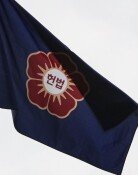[Editorial] The Spirit of the Korean Govt-in-Exile
[Editorial] The Spirit of the Korean Govt-in-Exile
Posted April. 14, 2009 11:15,
A flurry of ceremonies was held in Korea and abroad yesterday to mark the 90th anniversary of the Korean government-in-exile.
The Korean government held a ceremony honoring the late leader of the government-in-exile Kim Ku at Baekbeom (Kims pen name) Plaza on the Seoul mountain Namsan. In Shanghai, China, and Los Angeles, descendants of Korean independent fighters and ethnic Koreans paid their respects to patriots. The spirit of the government-in-exile, which vowed to recover the sovereignty of Korea from Japan 90 years ago in a foreign nation, has survived to become part of Korean history and helped make the country one of the worlds major economic powers. As the Constitution suggests, the Republic of Korea inherited the legal framework of the government-in-exile. Controversy flared up over Koreas liberation and foundation last year when Korea marked the 60th anniversary of the Republic of Koreas foundation. The spirit of the government-in-exile and Koreas foundation are inseparable historic occasions. President Lee Myung-bak stressed in his commemorative speech, The government-in-exile not only named the country the Republic of Korea, but also laid the framework for a democratic republic system, and this served as the ground for the nations foundation. The government-in-exile was the basis for Koreas liberation and foundation, and the history Korea generated following its establishment is a proud legacy just like the government-in-exile.
The government-in-exile was a direct result of the March 1 Independent Movement in 1919. It connected Korean governments that were cut off for nine years by Japanese imperialists and was the first democratic republican government based on the Constitution in Korean history. It is also an integral government jointly participated in by majority nationalists and minority socialists.
Patriots who served in the government-in-exile continued their bloody struggle, moving around as far as 25,000 kilometers to Chongqing, China, to fight Japanese imperialists. This was after they left Shanghai following patriot Yoon Bong-gils attack on the Japanese military in 1932. Though the government-in-exile fought from China, it devoted everything to recover sovereignty and construct the Republic of Korea. The 27 years of the government-in-exile is a period found nowhere else in world history.
Descendants of Koreas independent fighters were deeply moved and cried while visiting relics of the government-in-exile, which spanned from Shanghai to Chongqing in a tour hosted by The Dong-A Ilbo and Ewha Academy last month. They paid their deepest respects to their ancestors risking their lives for the struggle for independence, and developed strong affection for the government-in-exile, which preserved the pride of the Korean people when they had no country of their own. It is lamentable that younger Koreans do not understand the history and spirit of the government-in-exile, which deserves more than the short-lived interest on the day of its anniversary.
Relics from the interim government are poised to disappear due to massive redevelopment projects in China. Seoul must persuade Beijing, which considers struggles against Japanese imperialists as a symbol of Korea-China friendship, into preserving as much of the government-in-exile as possible. In particular, programs need to be developed to allow the younger generation to trace the footsteps of the government-in-exile and learn the patriotism of Koreas ancestors. The government-in-exile is a proud history of the Republic of Korea and followed the spirit of independence and autonomy.
Headline News
- Med professors announce intention to leave hospitals starting Thursday
- Bridge honoring Sgt. Moon Jae-sik unveiled in Pennsylvania
- Chief of Staff Chung tells presidential secretaries to stay away from politics
- US FTC bans noncompete agreements
- N. Korea launches cyberattacks on S. Korea's defense companies







